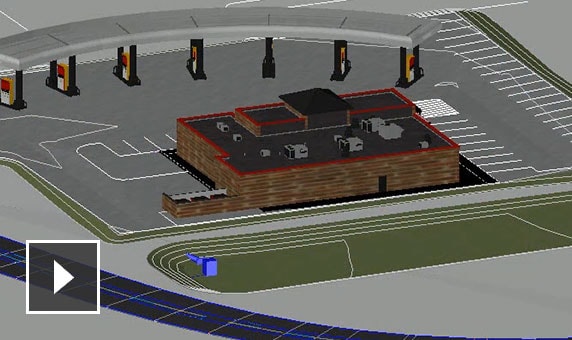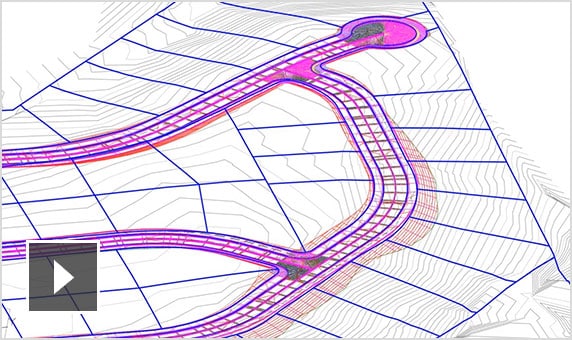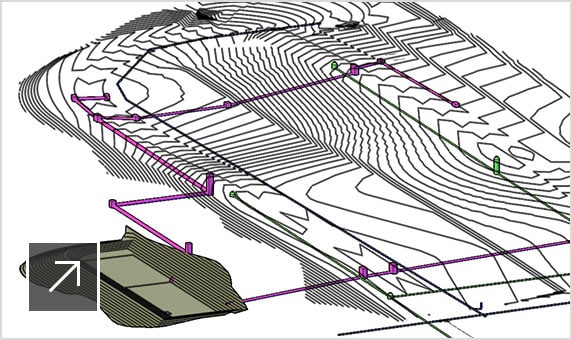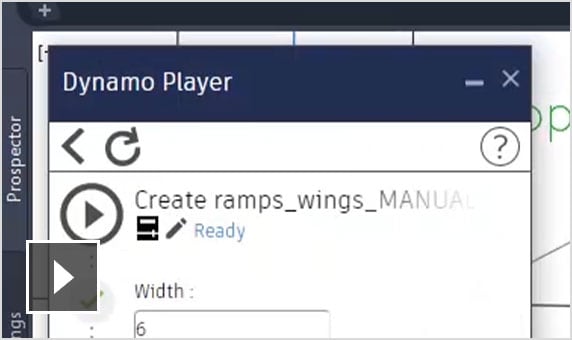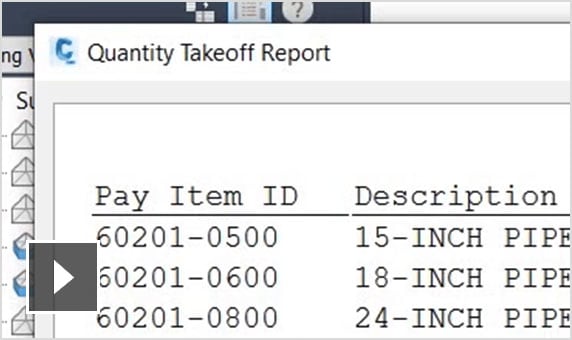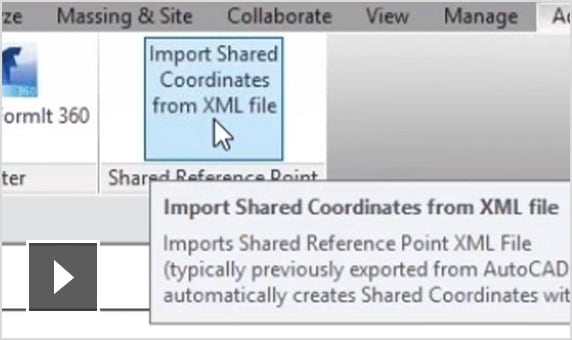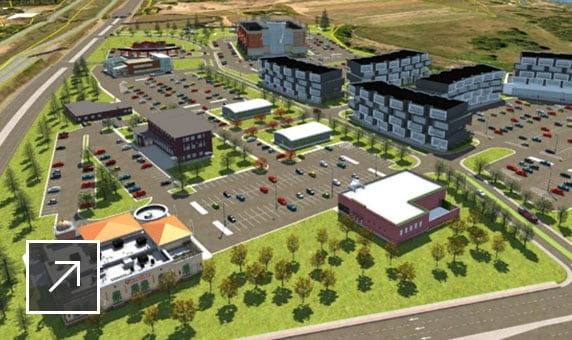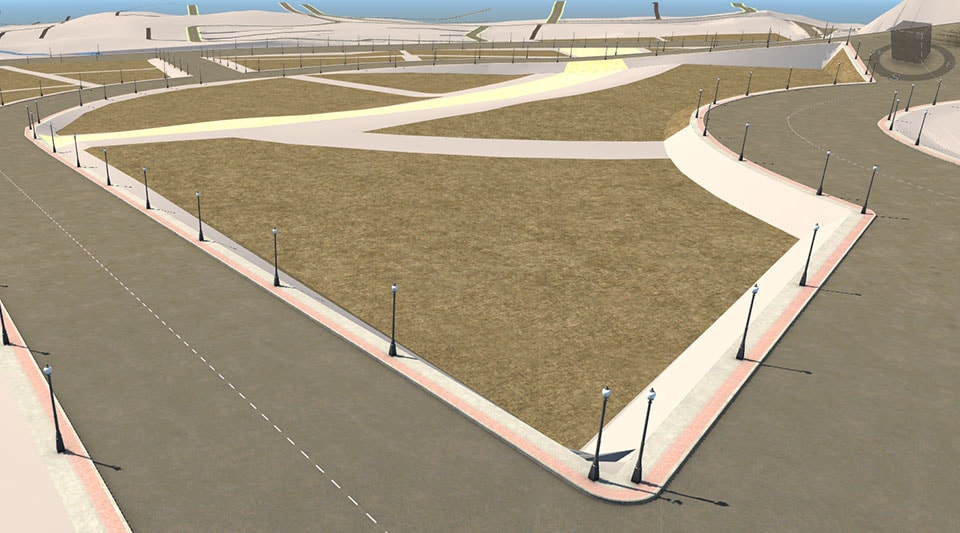Download, create, analyze, and adjust survey data. Streamline the transfer of field-captured data to and from the office. (video: 11 sec.)
CIVIL 3D FOR SITE DESIGN
Generate comprehensive and more accurate designs
Get your projects off the ground quickly with tools to help you prepare and shape ground surfaces for roadway, subdivision, and other site projects.
Site design
What you can do with Civil 3D
-
-
![Video: Silent screencast of context modeling being applied to 2D wireframe]()
Terrain modeling
Create comprehensive digital models of ground topography for studies such as land-use feasibility, transportation system planning, and water flow simulations. (video: 14 sec.)
-
![Video: Silent screencast of a 3D model for a subdivision corridor being generated from a 2D wireframe]()
Corridor modeling
Create dynamic and data-rich corridor models for designs such as residential roads, curbs, and sidewalks, swales within a subdivision, and parking lot design. (video: 10 sec.)
-
![Video: Silent screencast showing path analysis of subdivision and use of the AutoDrive ribbon]()
Vehicle tracking
Use swept path analysis to speed planning and evaluate safety standards compliance. Animate vehicle paths with 2D or 3D animations using multiple camera angles. (video: 20 sec.)
-
![Conceptual drawing of silo corridor gravity system in Civil 3D user interface]()
Stormwater and sanitary sewer
Model storm and sanitary sewer systems. Analyze networks to resize pipes, reset inverts, and compute energy and hydraulic grade lines according to HEC-22 standards.
-
![Video: Silent screencast showing use of the storm and sanitary analysis tool in Civil 3D]()
Stormwater analysis
Integrate stormwater and wastewater analysis during planning and design of urban drainage systems, storm and sanitary sewers. (video: 39 sec.)
-
![Video: Silent screencast showing use of the pressure pipe toolspace in Civil 3D]()
Pressurized utilities
Lay out horizontal and vertical 3D design of pressure networks. Model deflected-curve pipe segments, and use design and depth checks to meet project standards. (video: 11 sec.)
-
![Video: How Dynamo for Civil 3D helps land and site developers save time and increase efficiencies in their workflows]()
Design automation
Use a visual programming application to generate scripts that automate repetitive and complex tasks. Save these scripts in a library and reuse them as needed. (video: 1:49 min.)
-
![Video: Silent screencast showing some of the materials and quantities tools in Civil 3D]()
Materials and quantities
Use materials and sectional or profile information to create reports for volumes along an alignment, comparing design and existing ground surfaces, and quantity takeoff. (video: 13 sec.)
Workflows and use cases
-
![Video: Quickly lay out features of the site plan, analyze and update designs, and visualize progress at all stages]()
Civil 3D + ReCap + InfraWorks
Leverage conceptual designs to improve site project layout, site grading, and drainage design. (video 1:49 min.)
-
![Video: The Autodesk AEC Collection gives you connected tools for better site and building coordination]()
Civil 3D + Revit + InfraWorks + Navisworks
Share coordinate systems to improve coordination between architects and civil engineers. (video 1:59 min.)
-
![Rendering of commercial development model with offices, retail space, apartment buildings, parking, and roads]()
Keys to effective context modeling
The aggregation of LiDAR, drone data, GIS, and other data sources is critical to generating a real-world context model of your project.

